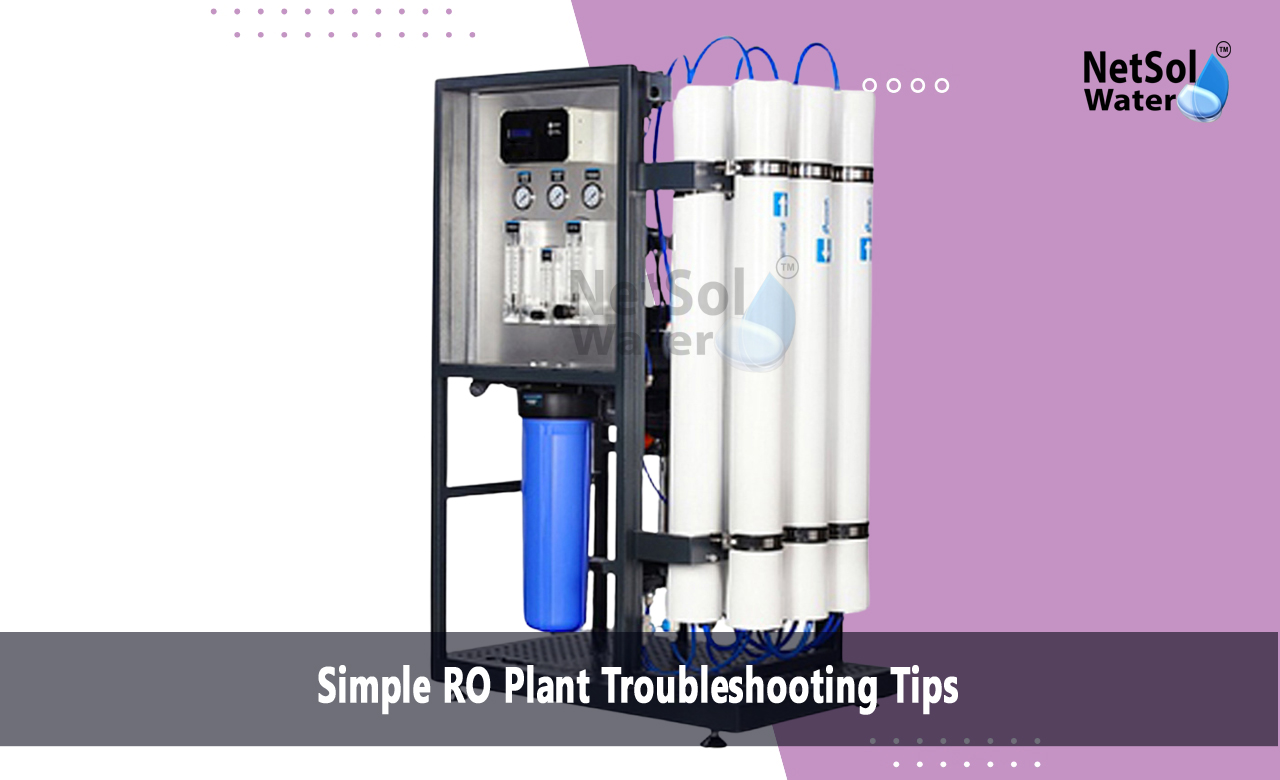What are Some Simple Troubleshooting Tips for an RO Plant?
A Reverse Osmosis plant is one of the most effective methods of purification of water. It removes contaminants, impurities, and toxins to provide fresh and safe drinking water. But as with every other system, an RO plant can also be plagued by running issues in the long term. Knowing how to identify and rectify common faults can save money and time and make the system function at the best.
We will provide efficient and simple RO troubleshooting tips.
Common RO Troubleshooting Tips
Low Water Flow or No Water
Slow flow rate or no water at all is one of the most common issues with an RO system. This can happen for various reasons.
· Clogged Filters: Filters are clogged by dirt and trash in the long term, obstructing water movement. Replacing sediment and carbon filters regularly could resolve this.
· Low Water Pressure: Proper pressure is necessary for the operation of the system. Low pressure could require a booster pump to be used.
· Faulty RO Membrane: A membrane with blockages or damage might restrict water output. Replacing or flushing out the membrane would correct the problem.
· Tank Pressure Issues: Storage tank pressure decreases over time, leading to low water output. Resetting and verifying the tank pressure fixes it.
RO PlantCreates Unusual Noises
Unusual noises like humming, vibrating, or gurgling are signs of issues.
· Trapped Air in the System: When changing filters, air pockets create noises. Applying water through the system usually fixes it.
· Loose Fittings or Tubing: Improperly connected tubing will vibrate. Checking and tightening all tubing connections will correct the issue.
· Bad Pump: If your system uses a pump, excessive noise could be due to wear or pump failure, requiring maintenance or replacement.
Bad Taste or Odor in Water
If your RO plant water has an unusual taste or odor, it indicates contamination or defective filtration.
· Expired or Old Filters: Filters become inefficient over time. Periodic renewal of the post-filters and pre-filters can improve the quality of the water.
· Soiled Storage Tank: Sediments in the tank can cause offensive taste. Shaking the tank periodically can alleviate the situation.
· Biofilm Accumulation: Algae or bacteria can accumulate inside the tubing or filters if proper maintenance is lacking, requiring entire cleaning and sanitation.
Leaking RO Plant
Leaks may happen at several points in the system and must be repaired promptly to avoid wastage of water and damage.
· Loose Connections: Loose connections of tubing may cause leaks. Tightening all fittings firmly can prevent leaks.
· Worn-Out O-Rings: Rubber seals within the system can break down with age. Inspecting and replacing O-rings as needed is advised.
· Cracked Tubing or Housing: Filter housing or tubing can get physically cracked and allow leaks. Look for cracks in the system and replace them.
Ongoing Drain Water Flow
If the drain is running continuously, it could be due to several reasons.
· Automatic Shutoff Valve (ASO) Failure: This shutoff valve stops water supply when the tank gets filled. Replacing it if so might resolve it.
· Blocked Flow Restrictor: A defective restrictor might permit excess water to drain. It may be repaired by cleaning or replacing the restrictor.
· Incorrectly Installed Drain Line: Ongoing water flow may occur when the drain line is not properly installed. Proper installation rectifies this.
System Not Shutting Off
If your RO plant continues running despite the tank being full, there may be a mechanical issue.
· Faulty ASO Valve: This valve is designed to shut off the water when the tank is full. Replacing it is typically necessary.
· Low Tank Pressure: If the tank pressure is too low, the system will not shut off. Adjusting the pressure can fix this.
· Defective Check Valve: A check valve prevents backflow of water. If it breaks down, the system keeps functioning. Replacing the check valve can correct the issue.
RO Plant Not Producing Water
In case your system fails to produce water at all, some parts may not be functioning properly.
· Clogged or Blocked Filters: Dirty filters may stop water flow. They must be replaced regularly.
· Tank Pressure Issues: Incorrect pressure inside the tank can stop water supply. Pressure adjustment can solve this issue.
· Faulty Valve or Pump: If the system is pump-based, a failure in its operation can stop water production. Inspection and replacement of faulty parts can solve this issue.
· Frozen or Kinked Pipe: If the system is used in cold climates, frozen pipe can stop water supply. Adequate insulation can prevent this issue.
Conclusion
Regular maintenance and prompt troubleshooting can make your RO plant function effectively. The majority of common problems can be solved by inspecting filters, membranes, and pressure. Always refer to the manufacturer's instructions for part replacement and system cleaning. If issues continue, consult professional help to avoid causing more damage. By adopting these simple RO troubleshooting tips, you can make your RO plant deliver clean and safe drinking water round the clock.
Do you need an advice or assistance on selecting the best water and waste water treatment unit? We have solutions for all your problems!
Let us know your problem, our experts will make sure that it goes away.
For an assistance or related query,
Call on +91-965-060-8473



